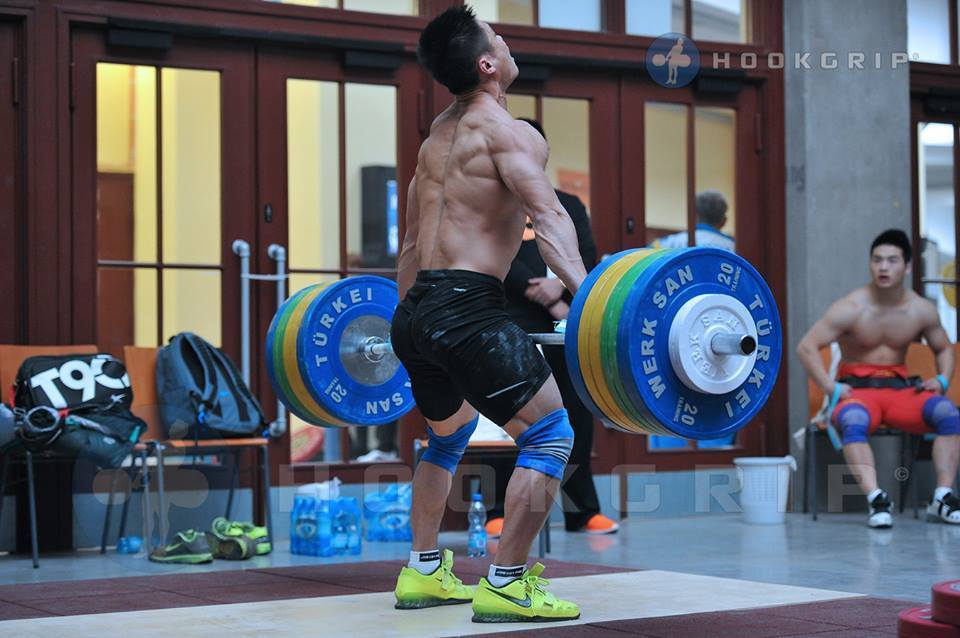Functional Hypertrophy – Mass building for athletes

For many athletes, the off season and pre-season is an ideal time to build some mass but I’m not talking about the kind of inflated guns that Arnie would be proud of. Fair enough if you are looking to build some biceps for the beach but that shouldn’t be your primary focus.
But why bother getting bigger anyway?
Increased cross-sectional area of a muscle is shown to improve force production capabilities. In other words, if we can increase the size of those legs, we have a much better chance of increasing power output in a given task (run faster, jump higher, kick harder). Structural change and neural improvements will both improve cross-sectional size so these should be a focus in training.
We are not looking to isolate movements or do 16 exercises for your bi’s and tri’s.
Strength is still a high priority so we need to consider this in our training. We also need to maintain some power and speed that we have developed over the season.
How do you build lean muscle mass?
Whole body workouts would be ideal for an athlete with a focus on movements, not individual muscles (e.g. push and pulling, knee dominant squatting and hip dominant deadlifting).
There are three key mechanisms that cause hypertrophy: mechanical stress (e.g. heavy lifts), metabolic stress (e.g. high intensity anaerobic type exercise) and exercise induced muscle damage (e.g. eccentric training).
With this information, we can target some or all of these mechanisms with our training. The reps and sets would ideally reflect the aim of that session, so strength/max strength might be 3 – 6 sets of 1 – 5 reps. Hypertrophy/strength would be more like 3 – 5 sets of 6 – 12 reps.
A term often associated with hypertrophy is Time Under Tension or TUT, (relating to the muscles used) which can tick a lot of boxes. An example might be a heavy eccentric squat with a 3 second descent, 2 second pause and explosive concentric movement back to the top repeated whilst keeping constant tension in the corresponding muscles throughout.
So let’s go into the nuts and bolts of how a hypertrophy/strength session might look…
Day 1 (knee dominant lower/upper pull)
A1: Goblet or Front squats – 4 x 6 (Tempo = 3-2-X-0 would be 3 second eccentric, 2 second pause, Explode up, 0 sec rest at the top, repeat)
A2: Chin-ups – 4 x 6 (Alter tempo as above or add weight to increase difficulty if needed)
60 second rest between sets
B1: Rear foot elevated (RFE) Split squats – 4 x 6 ES (these can be done at BW or alter tempo as above or add weight to increase difficulty if needed)
B2: Inverted rows – 4 x 6 (Alter tempo as above or add weight to increase difficulty if needed)
60 second rest between sets
Trunk circuit:
Ab wheel roll-outs
Russian twists
3 x 6 (each side)
30 second rest between sets
Day 2 (hip dominant lower/upper push)
A1: Traditional deadlift or Romanian deadlift (RDL) – 4 x 6 (Tempo = 2-0-X-0 would be 2 second eccentric, 0 second pause, Explode up, 0 sec rest at the top, repeat)
A2: Deadbugs with full exhale as you extend – 4 x 6 ES (focus on maintaining a neutral spine and locking the rib cage down as you exhale) https://www.youtube.com/watch?v=rbemelnkHag (GREAT EXAMPLE HERE!)
60 second rest between sets
B1: Hip thrusters – 4 x 6-12 ES (maintain neutral spine, especially at the top position, think about squeezing the glutes at the top, rib-cage locked down)
B2: Bench press – 4 x 6 (Tempo = 3-2-X-0 would be 3 second eccentric, 2 second pause, Explode up, 0 sec rest at the top, repeat)
60 second rest between sets
Trunk:
Half Turkish Get-ups – 3 x 5 ES
30 second rest between sets
Day 3 (Uni-lateral lower/upper push and pull)
A1: KB offset Lateral lunges – 4 x 6 ES (hold the KB in a racked position, on the opposite side from where yous step out to, e.g. KB in left hand, step out to the right)
A2: Yoga push-up – 4 x 6-12 reps
60 second rest between sets
B1: Single leg hamstring bridge – 4 x 6-12 reps ES (Tempo 1-2-1-0)
B2: Single arm cable rows – 4 x 6 ES (Tempo 2-2-2-0)
60 second rest between sets
Trunk circuit:
Half kneeling cable chops
Bottoms up KB Waiter carries
30 second rest between sets
Just bear in mind that eccentric training of this nature is very stressful on your central nervous system and can take several days to recover fully, so use wisely and progress gradually.
Make sure you have a balanced programme that develops strength THROUGHOUT the body (don’t stick to bench press only, include lots of pulling exercises!)
Finally, good nutrition is crucial in order to support muscle growth and repair. As a basic rule of thumb I would recommend the following:
- For basic protein synthesis, you don’t need to consume more than 1.4 to 2.0 g/kg (around 0.64-0.9 g/lb) of protein per day.
- Nevertheless, consuming higher levels of protein (upwards of 1g per pound of body weight) may help you feel satisfied after eating as well as maintain a healthy body composition and good immune function. You should consume some protein before and after training to ensure adequate recovery.
- Sleep 7 – 9 hours per night
(Adapted from Precisionnutrition.com, 2017)
You can track your calorie intake via MyFItnessPal for free.
Please comment below if you have any questions or get in touch at [email protected]
Rob

